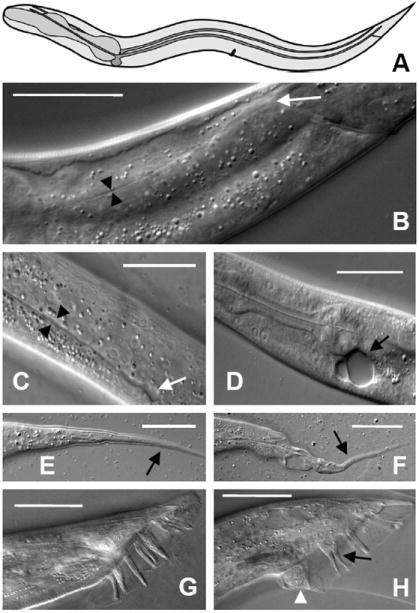Fig. 1.

exc-9 Mutant Phenotype. (A) Schematic drawing of excretory canals (in blue) in adult wild-type worm. Anterior to the left. For relative position, the pharynx is indicated in dark grey, vulva at the center of the animal, and anus at the posterior. The cell body beneath the pharynx sends processes right and left, which bifurcate to create four canals that extend the length of the animal. (B) DIC micrograph of canal lumen in wild-type young adult. Black arrowheads indicate the canal lumen diameter. The tip of the canal lumen (white arrow) is located past the anal opening near the tail of the worm. (C) Section near center of exc-9(n2669) mutant shows wider lumen (arrowheads) than in wild-type worm and fluid-filled cyst (white arrow) at end of shortened canal. (D) Another exc-9(n2669) animal shows large cysts at the cell body and no canal extension. (E) Tail whip (arrow) in wild-type hermaphrodite tapers smoothly to a point. (F) Tail whip (arrow) of exc-9(n2669) animal has a poorly formed tip. (G) Wild-type male has 9 sensory rays at one side of the tail, while exc-9(n2669) animal (H) has malformed ray (white arrowhead) and attached rays (black arrow). Scale bars: 50μm.
